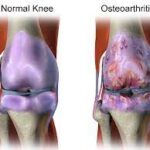Spondylolysis: Understanding the Causes, Symptoms, and Treatment Options
Spondylolysis is a common spinal condition that affects millions of people worldwide. It refers to a defect or fracture in the pars interarticularis, which is the part of the vertebra that connects the facet joints. This condition is most common in the lower back, particularly in the fifth lumbar vertebra, but can occur in any part of the spine. In this blog, we will discuss the causes, symptoms, and treatment options for spondylolysis.

Causes of Spondylolysis
There are several factors that can contribute to the development of spondylolysis, including:
- Genetics: Spondylolysis can run in families and is more common in people who have a family history of the condition.
- Sports: Repetitive stress on the spine from sports activities such as gymnastics, football, weightlifting, and wrestling can increase the risk of spondylolysis.
- Age: The condition is more common in adolescents and young adults due to the growth spurts that occur during this time.
- Obesity: Being overweight or obese can put extra stress on the spine, which can increase the risk of spondylolysis.
Symptoms of Spondylolysis
The most common symptom of spondylolysis is lower back pain that may be aggravated by activity and relieved by rest. Other symptoms may include:
- Stiffness in the lower back
- Muscle spasms
- Numbness or tingling in the legs
- Weakness in the legs
- Loss of bladder or bowel control (in severe cases)
Diagnosis of Spondylolysis
Spondylolysis is typically diagnosed through a combination of physical examination and diagnostic tests, such as:
- X-rays: X-rays can show if there is a fracture or defect in the pars interarticularis.
- MRI: MRI can provide more detailed images of the spine and can show if there is any nerve compression or damage.
- CT scan: CT scans can provide more detailed images of the spine and can show if there is any bone damage or abnormal growth.
Treatment Options for Spondylolysis
The treatment for spondylolysis depends on the severity of the condition and the symptoms experienced by the patient. Treatment options may include:
Rest and activity modification:
Resting the back and avoiding activities that aggravate the pain can help relieve symptoms.
Physical therapy:
Physical therapy can help improve strength and flexibility in the back muscles, which can help reduce pain and prevent further injury.
Medications:
Over-the-counter pain medications, such as acetaminophen or nonsteroidal anti-inflammatory drugs (NSAIDs), can help relieve pain and reduce inflammation.
Bracing:
A back brace can help support the spine and reduce stress on the affected area, which can help promote healing.
Surgery:
In severe cases, surgery may be necessary to repair the fracture or remove any bone spurs or other growths that are compressing the nerves.
Preventing Spondylolysis
While it may not be possible to completely prevent spondylolysis, there are several steps that can be taken to reduce the risk of developing the condition, such as:
Maintaining a healthy weight:
Being overweight or obese can put extra stress on the spine, which can increase the risk of spondylolysis.
Strengthening the back muscles:
Regular exercise and strengthening of the back muscles can help reduce the risk of injury.
Warming up before exercise:
Proper warm-up and stretching before exercise can help prevent muscle strain and injury.
Using proper equipment:
Using proper equipment for sports and physical activities, such as supportive shoes or a back brace, can help reduce the risk of injury.
Avoiding repetitive stress on the spine:
Limiting or avoiding activities that involve repetitive stress on the spine, such as heavy lifting or high-impact sports, can help reduce the risk of spondylolysis.
conclusion
spondylolysis is a spinal condition that can cause lower back pain and other symptoms. It is caused by a defect or fracture in the pars interarticularis and can be diagnosed through physical examination and diagnostic tests such as X-rays, MRI, and CT scans. Treatment options may include rest and activity modification, physical therapy, medications, bracing, and surgery. While it may not be possible to completely prevent spondylolysis, steps can be taken to reduce the risk of developing the condition, such as maintaining a healthy weight, strengthening the back muscles, warming up before exercise, using proper equipment, and avoiding repetitive stress on the spine. If you are experiencing lower back pain or other symptoms, it is important to seek medical attention to determine the cause and appropriate treatment options.











